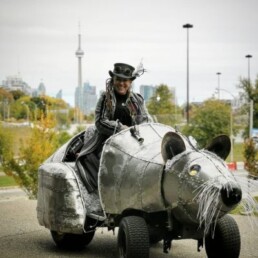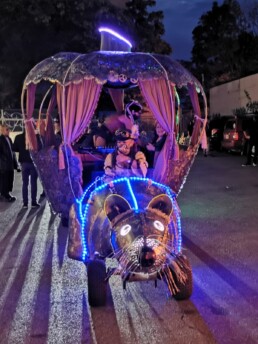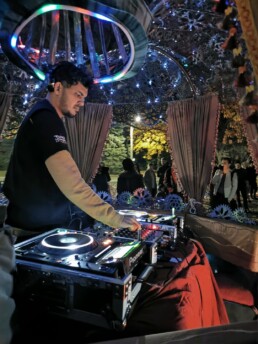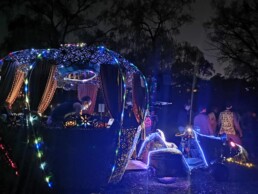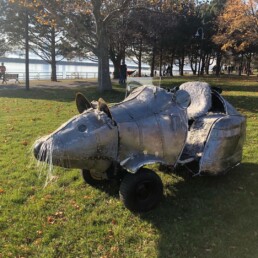The SteamPunkin Story
If there is any single genre that has captured the imagination of people in all walks of life throughout the world, it is the fairy tale. Fairy tales work with people, for people, on people, affecting what people are able to see as real, and possible. This mutant vehicle is inspired by the folk tale of Cinderella, known for its multiple variants found in the Greek, Roman, Egyptian, and Chinese mythologies.
The Cinderella archetype boils down to a story about finding a way to oppose unjust oppression and rise above through magic change. From the multiverse of versions, the artist chose a steampunk aesthetic to recover elements of Charles Perrault’s 1697 version, who first introduced the scene of the pumpkin and animal friends, being transformed by magic. This art car brings us to imagine a pumpkin growing disproportionately while wheels, axles, doors, and windows are sprouting until it is converted into a splendid Steampunkin coach.
2020 marks the first year of a twelve year cycle of the Chinese calendar starting with the rat, the same symbol the artist was born under. She wanted to preserve the animalistic imagery in her art car and bring to life a punk rat, ROUS, to pull the Steampunkin carriage. ROUS is also used to reinforce the idea of new cycles, the importance of time in transformative processes, and how we are part of parallel multiverses.
The retro-futuristic decor plays with the existing tension between past, present, and future; cogs being interlocked and ticking together in this great Steampunkin machine reminds us about how the future was seen from the past and how the strength of the collective helped shape the future. The Steampunkin stands for all fairy tales representing our ancient past catching up with the future to become the imperishable stories that transcend time.

